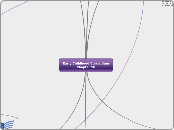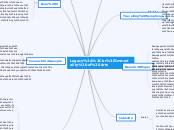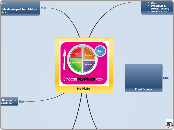Graphic Narrative
Comics
Comics in Education
In his 1993 book Understanding Comics, Scott McCloud gives his definition of the word "comics":
comics (kom'iks) n. plural in form, used with a singular verb. Juxtaposed pictorial and other images in deliberate sequence, intended to convey information and/or produce an aesthetic response in the viewer. (p. 9)
Throughout this document, the word "comics" will be used as a singular noun, in adherence to McCloud's definition.
The educational potential of comics has yet to be fully realized. While other media such as film, theater, and music have found their place within the American educational establishment, comics has not. To determine the reasons behind this oversight, I will review the history of comics in education from 1933, the birth year of the modern comic book, to the present. Afterwards, I will discuss the many strengths of comics as an educational tool that emerge from the literature.
Teaching with Comics
The multi-dimensional nature of comic strips and comic books is a source of excellent teaching material, and allows teachers and students to explore language in a creative way.
Bug Powder
BugPowder is a collaborative weblog produced by and for the UK small press comics community.
Unit_53
Graphic Narrative
Scheme of Work
Subtopic
Activities
Session 02
Week 1 : Form, Meaning, and Culture
Topic: Shaping content and context with visual forms
Class Activity: Review of Design III topics and learnings
abstract --->perception
To de-mystify the rules that govern the visual world one must have a solid understanding of how messages are received and decoded. For a greater understanding of this decoding we can rely upon the psychology of perception, known as Cognitive Psychology.
This field of study investigates how we derive meaning from visual stimulus using commonalities in the mix of how humans process information. Cognitive Psychologists classify this decoding into a perceptual hierarchy—an order in which different levels of awareness occur in the arrival of meaning. The hierarchy traces the transition from chaos to comprehension and is independent of medium: it can be applied to the study of visual, aural, or multi-media communication.
5meaning: comprehension
4form: sign identification and recognition
3structure: symmetry-asymmtetry, visual hierarchy
2sensation: proximity, similarity, continuance
1stimulus recognition: figure/ground
Gestalt perceptual factors build a visual frame of reference which can provide us with a reliable psychological basis for the spatial organization of information.
Gestalt theory is particularly valuable in understanding where visual organization starts, because it gives concrete evidence to how the eye organizes visual experiences.
Gestalt theory:
* The parts of a visual image may be considered, analyzed, and evaluated as distinct components.
* The whole of a visual image is greater than the sum of its parts.
Gestalt theory can be broken down into five principles.
1. figure/ground (stimulus) The fundamental principle of perception which allows us to read imagery. This is made possible by contrast.
2. similarity The degree of sameness to each other. Sensations are grouped and ordered in the mind based upon their likeness toward one another.
3. proximity Degree of distance between sensations. Sensations are favored according to nearness of parts. Closer parts form groups by visually uniting.
4. continuance Grouping that results in a continuation of direction. Sensations are grouped into directional forms when the receiver reads motion implied by position.
5. closure Grouping into recognizable forms or shapes. Sensations are grouped into a complete visual form through the principles of similarity, proximity, and continuance.
Session 01
Smart-board
Blogs/Sites
Richard Fenwick
Design Flux
Graphic Motion Design
Motion: Design
Podcasts
Interviews
Visual Essays,
Poetry & Documentary
Resources
National Association of
Comic Art Educators
Useful Reading
Graphic novels across
the curriculum
Useful reading list
Graphic Novels
Graphic novels in
the curriculum
This new literacy resource has been developed to highlight how graphic novels can engage pupils and how they can be used throughout the curriculum.
History of the
Graphic Novel
A Brief History of the Graphic Novel
by Stan Tychinski
Since the days of prehistoric man, people have been telling stories using pictures instead of prose. From the cave paintings of the Cro-Magnon to the hieroglyphics of Ancient Egypt, graphic storytelling has been in use as a popular means for communicating thoughts and ideas.
Narrative
Visual Design
This course is an introduction to Visual Organization and Information Design. Students will explore different types of information and the modes of visual organization and representation. The class involves a studio and will draw upon technological skills acquired in Design Technologies 1.
Learning Outcomes and Objectives:
* Develop a conceptual understanding of visual organization.
* Develop an ability to apply this conceptual understanding to the development of practical skills.
* Develop a repertoire of strategy for the visualization of a variety of kinds of information.
* Understand the implications that visual organization skills hold for the practice of design management.
* Prepare students to apply their knowledge of visual organization to their upper-level classes (Design Research, Design Development, Design Technologies II (elective), Senior Seminar and Thesis)
Computer game theory:
narrative versus ludology
Graphic Narrative Project. Consider "visualizing" a song lyric (if it tells a narrative), short story, poem, news report, or narrative of your own. The audience for this project should be adults, not children.
Computer Games









